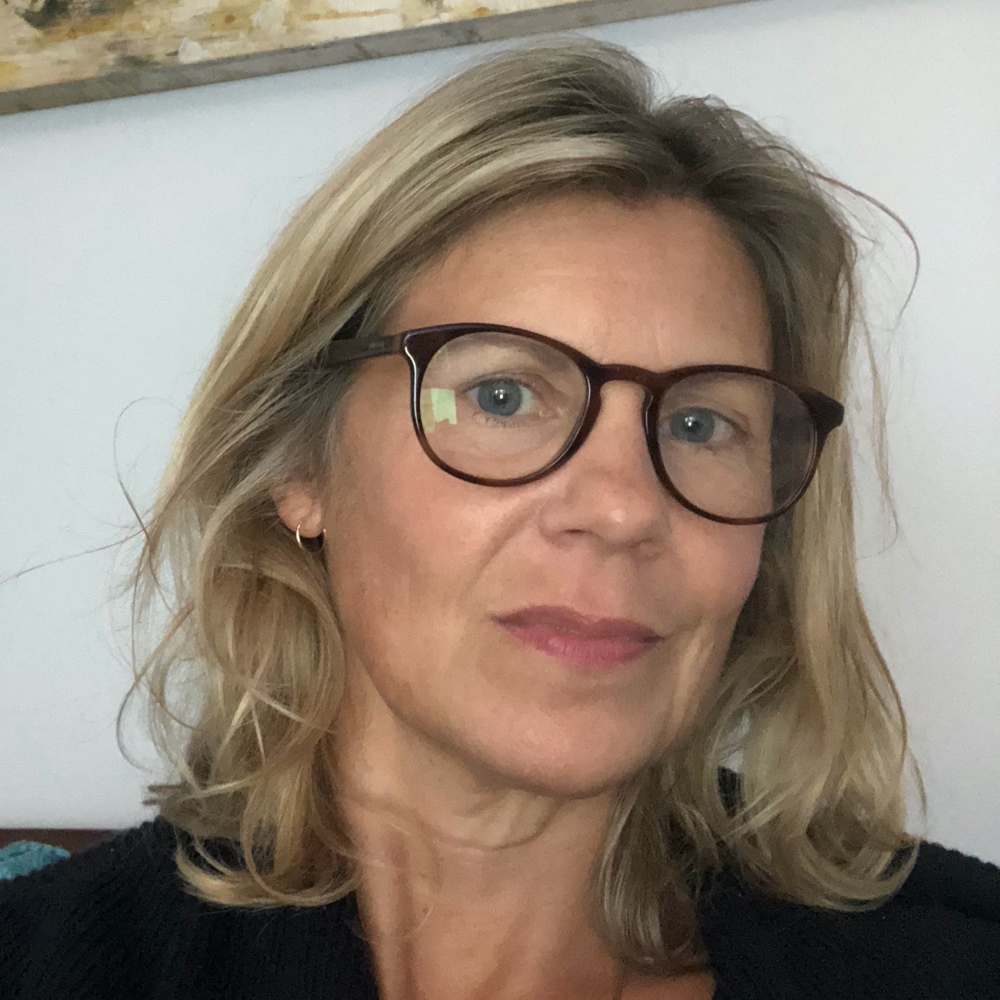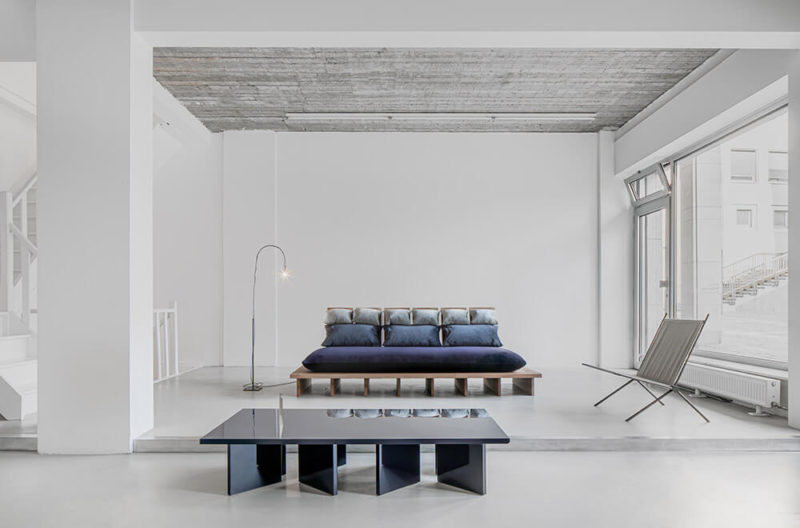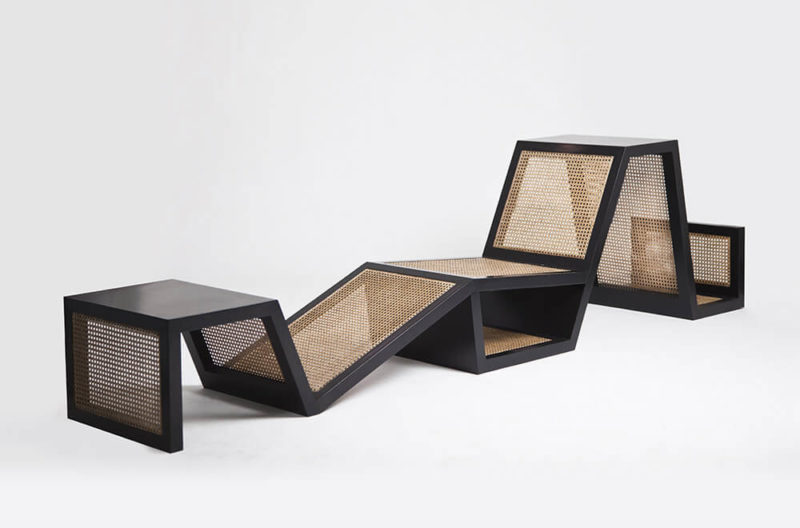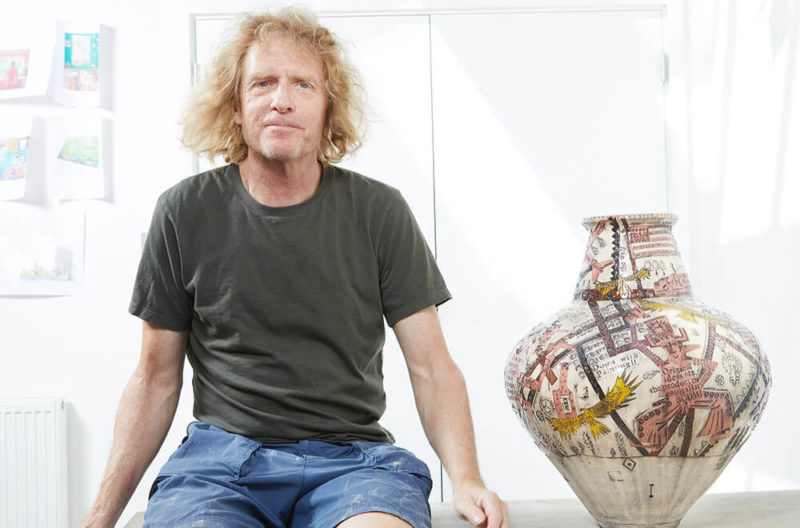Ron Arad 69
Designer, architect, artist and playful maverick, Ron Arad doesn't need a passport to move between disciplines, he doesn't even need a ticket. TDE interviews the artist as a collection of his works opens at Newlands House Gallery.
Newlands House Gallery, Petworth
September 19th 2020 – January 7th 2021

Ron Arad with ‘Blame the Tools – Fiat’, 2013
COURTESY: Ron Arad & Newlands House Gallery / PHOTOGRAPH: Gary Morrisroe
“THIS IS NOT a scholarly retrospective,” says Ron Arad as we discuss the show, Ron Arad 69, that has just opened at Newlands House Gallery, in Petworth, West Sussex. He’s had rather a lot of those already, he points out, including ‘No Discipline’ which opened in 1999 at the Pompidou Centre, Paris, and transferred to MoMA, New York, before moving to the Barbican, London, in 2010, renamed ‘Restless’. “Ron Arad 69 consists mostly of pieces of mine that Simon de Pury has collected. We’ve known each other for forty years and whenever I visit his home, I find works I’ve lost track of, or forgotten about. I’m excited to see what he’s chosen.”
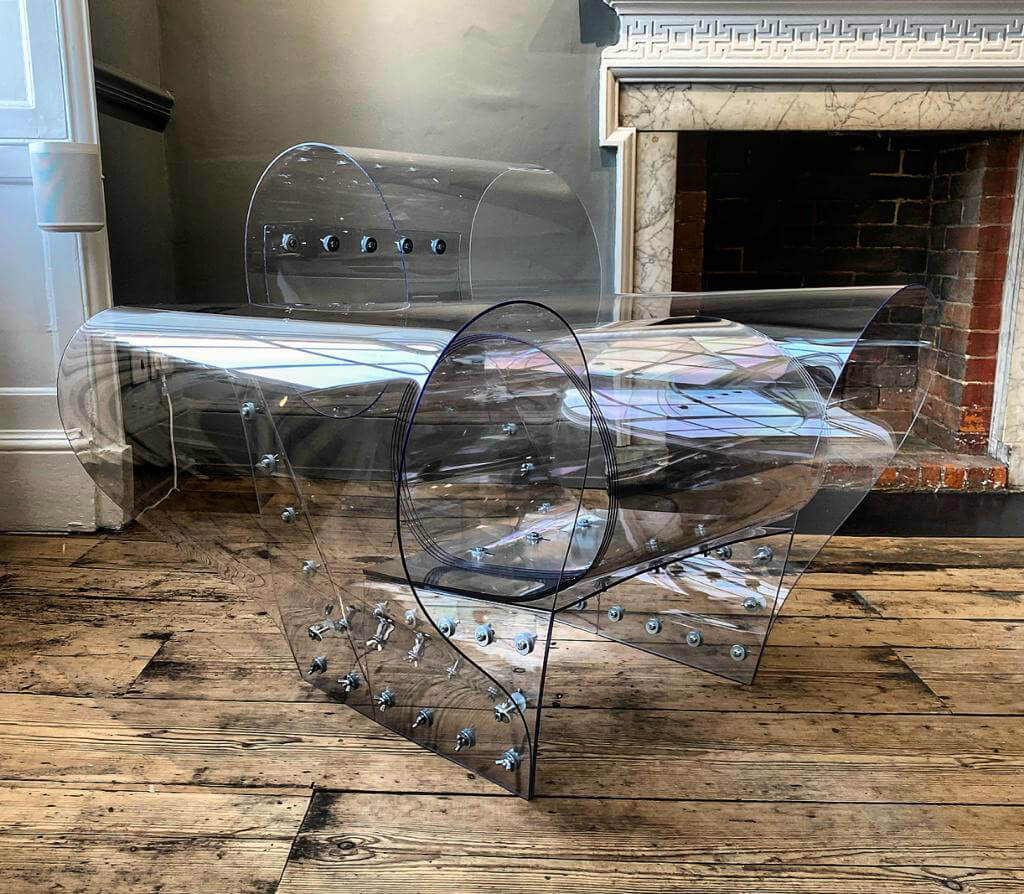
Ron Arad, ‘Well Transparent Chair’, 2010
COURTESY: Ron Arad & Newlands House Gallery / PHOTOGRAPH: Simon de Pury
De Pury, a renowned auctioneer and art world figure, launched the 12-room gallery earlier this year with a centenary exhibition of work by photographer Helmut Newton. He compares Arad’s stature in the worlds of architecture and design to Newton’s in photography and describes Arad as “one of the all-time greats.” Arad says he has enjoyed collaborating with his old friend: “It could just as easily be called ‘Simon de Pury 69’ – we’re exactly the same age, both born in 1951.”
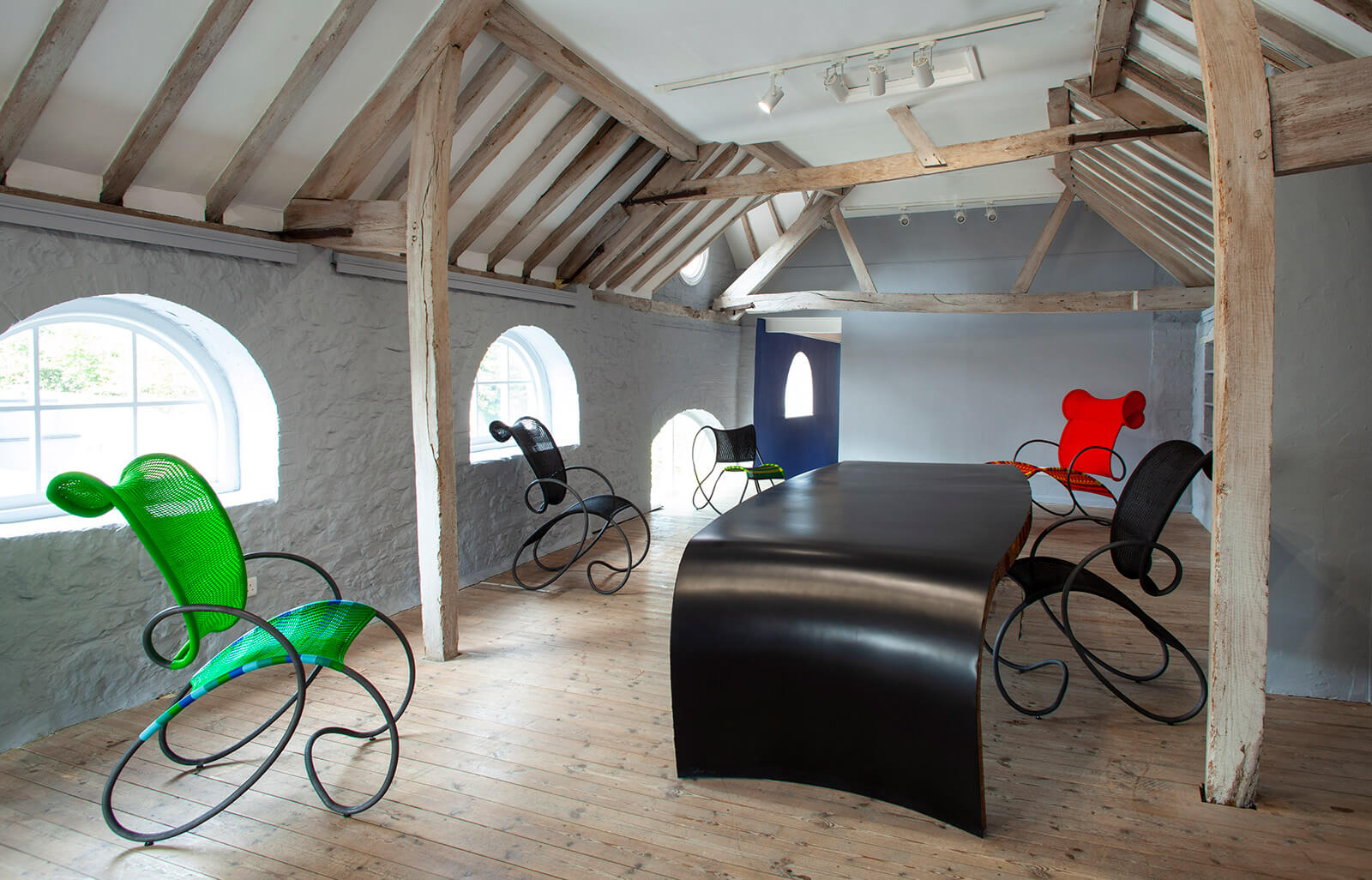
Installation view, with ‘All Light Long Table’, 2002-2003 and ‘Moroso Modou Chairs’, 2019
COURTESY: Ron Arad & Newlands House Gallery / PHOTOGRAPH: Elizabeth Zeschin
We are speaking on Zoom and Arad is in the conservatory of his north London house, which has served as a studio during lockdown but looks more like a playroom. A car constructed from cushions, speakers and upended furniture is clearly visible. “I was playing like an eight-year-old boy,” he admits. “But it was for a piece – I wanted to put a Morgan in the RA Summer Exhibition.” Arad was made a Royal Academician in 2013 and in 2016 installed a rotating cylindrical tower, ‘Spyre’, in the courtyard, which filmed visitors coming to the Summer Exhibition. This year, he was inspired by his neighbours. “I’m always fascinated, walking through Belsize Park, when you see the cars covered and you have to imagine what’s underneath.” Social distancing rules meant the proposed installation was too big for the RA, so he sent his sketches to be woven on a jacquard loom instead, for bespoke tailors Huntsman to cut and stitch into “this amazing woven car cover.” The piece will now be exhibited in Savile Row, on a metal structure made from components from original Morgan cars, but during lockdown he had to ad lib. “I’ve missed the studio,” he says, “It’s a progressive playground.”
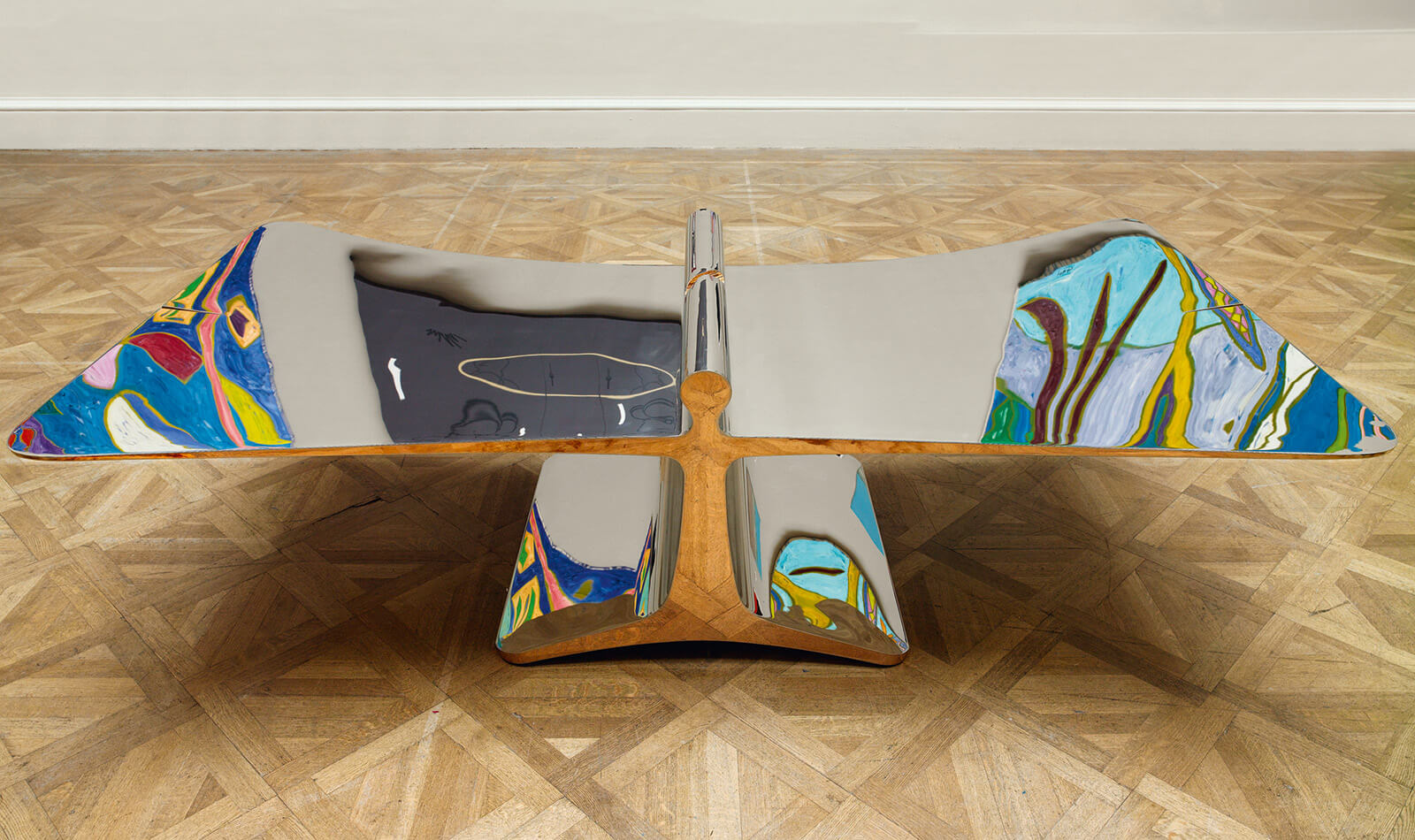
Ron Arad, ‘Ping Pong’, 2008
COURTESY: Ron Arad / PHOTOGRAPH: John Bodkin
The studio has lent several works to the exhibition, including unseen releases for 2020. “I made a series of chairs to celebrate Micky Mouse’s 90th birthday, called ‘Don’t Fuck with the Mouse’ – they’re currently on show in LA,’ he says. “The last chair was made on January 21st, the day the UK left the EU, so I called it ‘What Now’.” Arad bought every newspaper he could find and embedded their front pages in the chair’s polyester coating. ‘What Now’, otherwise known as the ‘Brexit Chair’, contains the word goodbye in 27 European languages and he chose not to send it to LA – “What do they know about Brexit?’’ – but to inaugurate it at Newlands House. “It turned out a lot better than I deserve,” he adds, “which is my favourite thing, when the work is so much greater than you could imagine.’
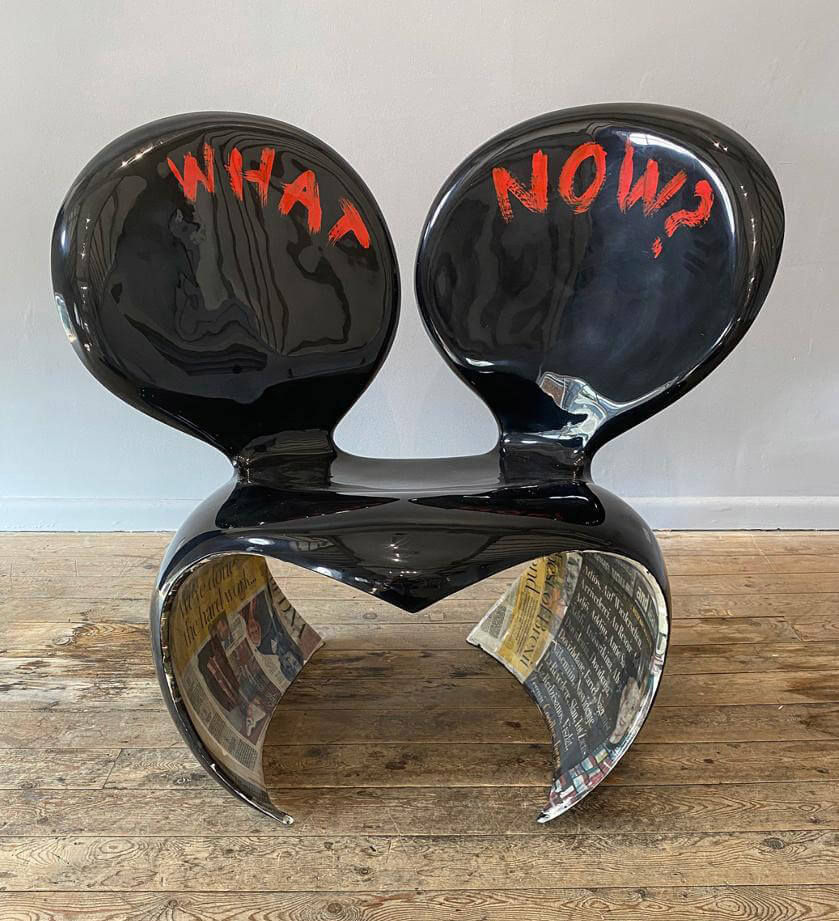
Ron Arad, ‘What Now?’, 2020 (Brexit Chair)
COURTESY: Ron Arad & Newlands House Gallery / PHOTOGRAPH: Simon de Pury
The most important object at Ron Arad Associates, housed in a former piano workshop in Chalk Farm, is a curved, steel ping-pong table, he tells me. ‘Ping Pong’ (2008), is one of 50 studio pieces in the show – others include ‘Rod Gomli’ (2009), ‘Blo-void 1’ (2005), ‘BOOP Table’ (1999), ‘Big easy volume 2 for 2’ (1989), and the first pieces of furniture Arad ever made, his iconic ‘Rover Chairs’ (1981).
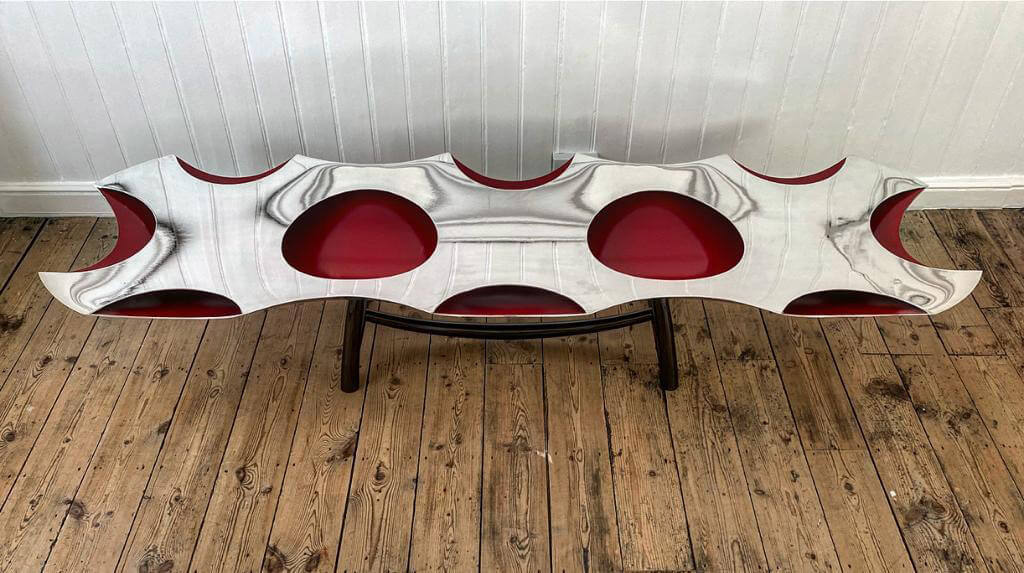
Ron Arad, ‘BOOP Table’, 1999
COURTESY: Ron Arad & Newlands House Gallery / PHOTOGRAPH: Simon de Pury
Known for ground-breaking experimentation with materials and form, and the seamless melding of new technologies with artisanal techniques, Arad is one of the most influential and ubiquitous designers of our time. The studio’s output is not only vast but astonishingly broad; Arad refuses to acknowledge boundaries between art, architecture and design, says he “doesn’t need a passport” to move across disciplines, and is equally dismissive of any hierarchy between one-offs, studio limited editions and production on an industrial scale.
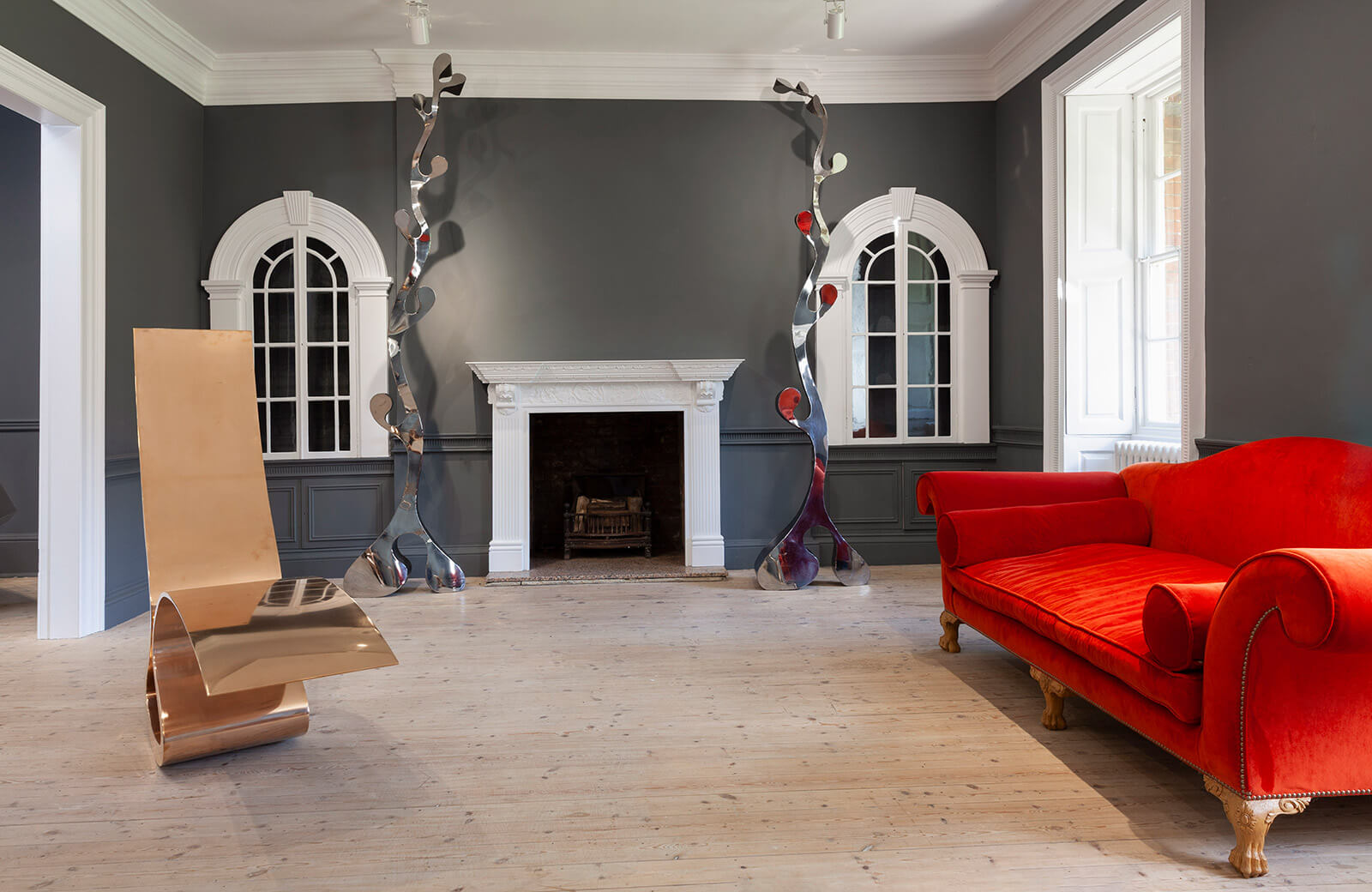
Installation view, with ‘Before Summer’, 1992 and ‘Unique Pair’, 1989
COURTESY: Ron Arad & Newlands House Gallery / PHOTOGRAPH: Elizabeth Zeschin
“In the past, everything I did was an art piece that got translated into production,” he says. This is true of two of his most recognisable designs, the bendy ‘Bookworm Shelf’ (1993), originally made from a thin blade of steel and mass-produced in customisable PVC by Kartell, and the ‘Tom Vac’ chairs (1997), created as part of a sculpture for the Milan Furniture Fair, produced by Vitra, and relentlessly faked in China. Dividing his studio into two floors, design and architecture, was “a necessary evil” he explains, down to ever-increasing architectural commissions that demanded a dedicated team.
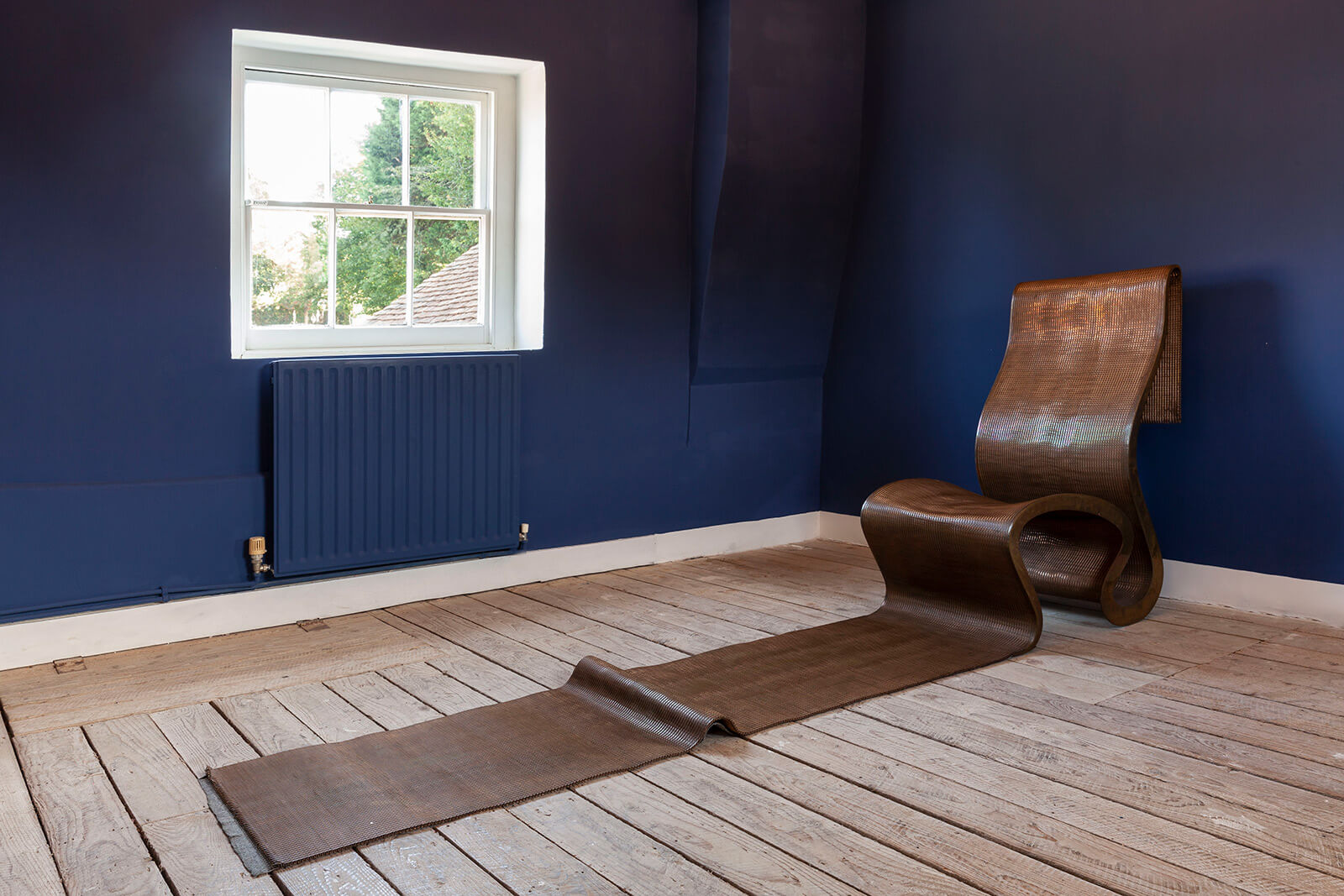
Ron Arad, ‘London Papardelle’, 1992
COURTESY: Ron Arad & Newlands House Gallery / PHOTOGRAPH: Elizabeth Zeschin
Arad’s first large-scale commercial project, the Design Museum in Holon, Israel, was completed in 2009, and features two main gallery buildings wrapped in ribbons of lustrous, weathered steel (COR-TEN). His most recent is the Totzeret HaArtez Towers scheme, in Tel Aviv. The design of the office tower, which grows wider at the centre and has minimal contact with the ground, was inspired by an iceberg but is also concerned with human experience and the natural environment. “I hate the usual thing of having to cross a shopping mall to reach a building and I wanted to use the smallest footprint possible, so I put the building on three legs.” It has a park underneath, a large roof terrace and a spectacular atrium with an unusually upbeat security desk. Arad is now working on a second tower, connected to the first by an elevated walkway, which, when it’s finished in 2024, will be the tallest building in Israel.
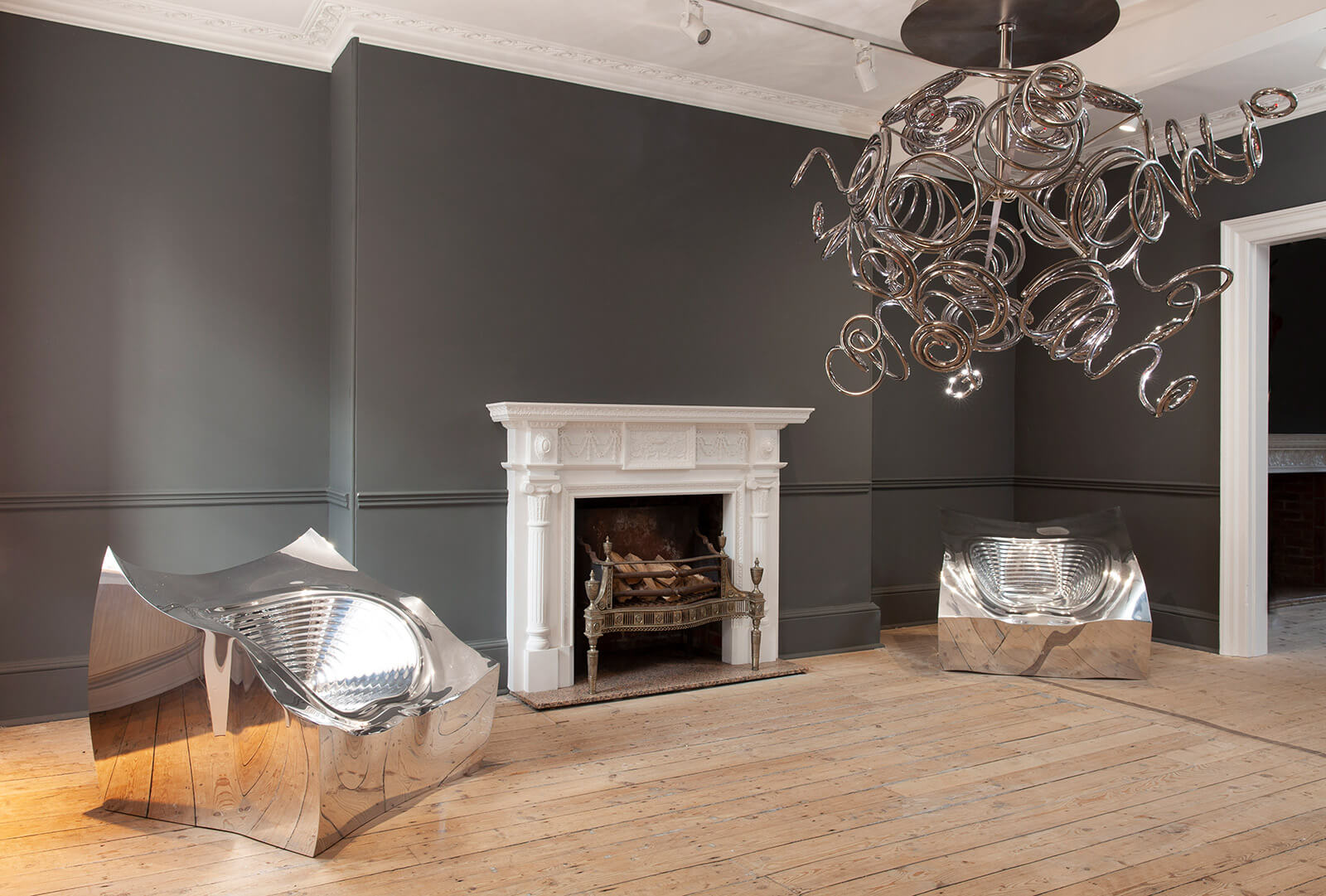
Installation view, with ‘Spaghetti Kobra Chandelier’, 2008; ‘Tom Bloc’, 2006 and ‘Thick Vac’, 2006
COURTESY: Ron Arad & Newlands House Gallery / PHOTOGRAPH: Elizabeth Zeschin
Arad seems especially pleased with the sculpture he embedded in one of the building’s legs. He exhibits his art regularly and has created a number of major public works such as ‘Big Blue’ (2000) in Canary Wharf, ‘Evergreen!’ (2003) in Roppongi Hills, Tokyo, and ‘Vortex’ (2011) in Seoul. Temporary art installations include the critically acclaimed ‘Curtain Call’, a suspended curtain of silicon rods used as an interactive backdrop for live performance and film, which opened at the Roundhouse in 2011 and relocated to the Israel Museum in Jerusalem the following year. If people are confused about whether to call him an artist, designer or architect, Arad cites the cautionary tale of Frank Ghery who “was at the top of his game as a designer but had to give it up to be taken seriously as an architect.”

Ron Arad x Venini, ‘Lady Gaga’, 2020
COURTESY: Ron Arad
One of his favourite pieces at Newlands House is a machine he invented that uses a cast of his hand to scratch glass, its movements informed remotely via drawings made on an iPad. “It works in real time,” he explains, showing me the scratched results of iPad sketches by Christian Marclay, Cornelia Parker, Grayson Perry, Gavin Turk, David Shrigley, Tim Noble & Sue Webster and Ai Weiwei.
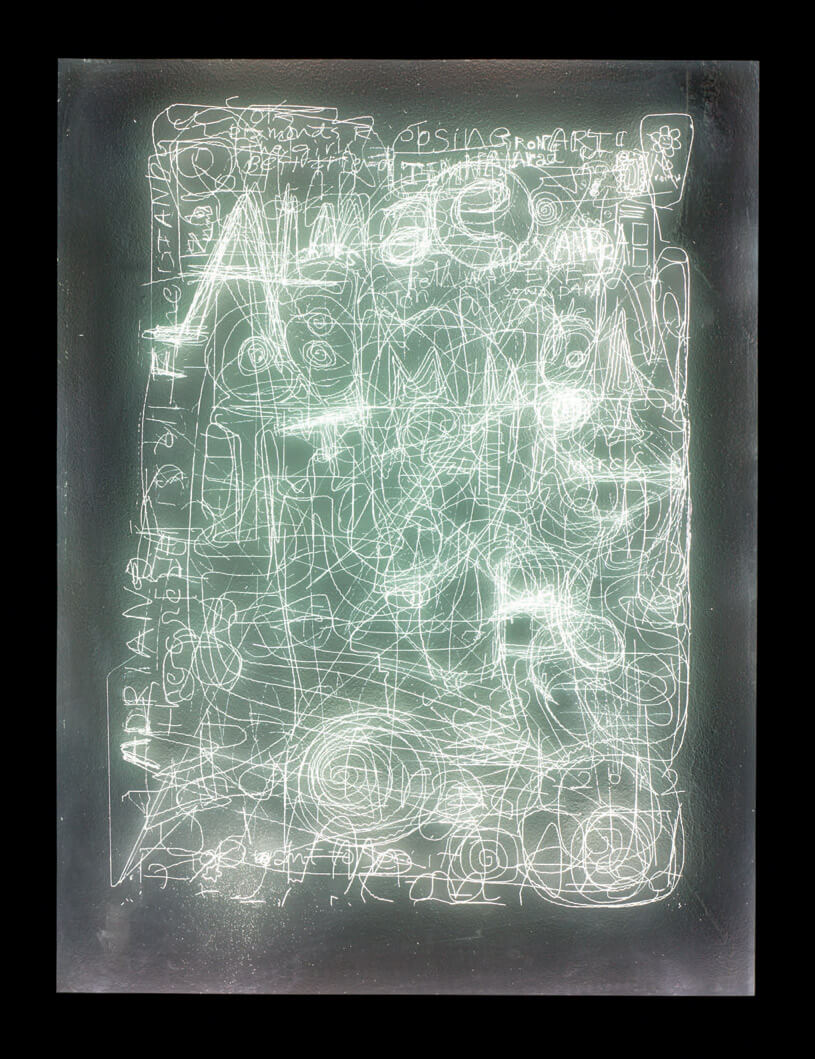
Ron Arad, ‘Last Train’, 2013
COURTESY: Ron Arad
Born in Tel Aviv to liberal, artist parents, Arad imagined he’d be an artist too but when he came to London in 1972 to study, he found that the Architectural Association School of Architecture was “more of an art school than the Slade or the Royal College. No one built anything, it was completely conceptual.” Not having planned to become an architect, Arad had no portfolio to show but offered to draw something for them on the spot. His nonconformity chimed with the spirit of the school and he got a place. Five years later, Arad found a job at an architect’s office but soon realised he was not cut out to work for other people and left one lunchtime never to return. He went, instead, to a junk yard behind the Roundhouse, a stone’s throw from his studio today, and picked up a Rover car seat. Combined with a piece of 1930s scaffolding, the seat became the ‘Rover Chair’. Arad produced a series and the French fashion designer Jean-Paul Gaultier walked into Arad’s first studio, founded in 1981 with Caroline Thorman, in Covent Garden, and bought six.
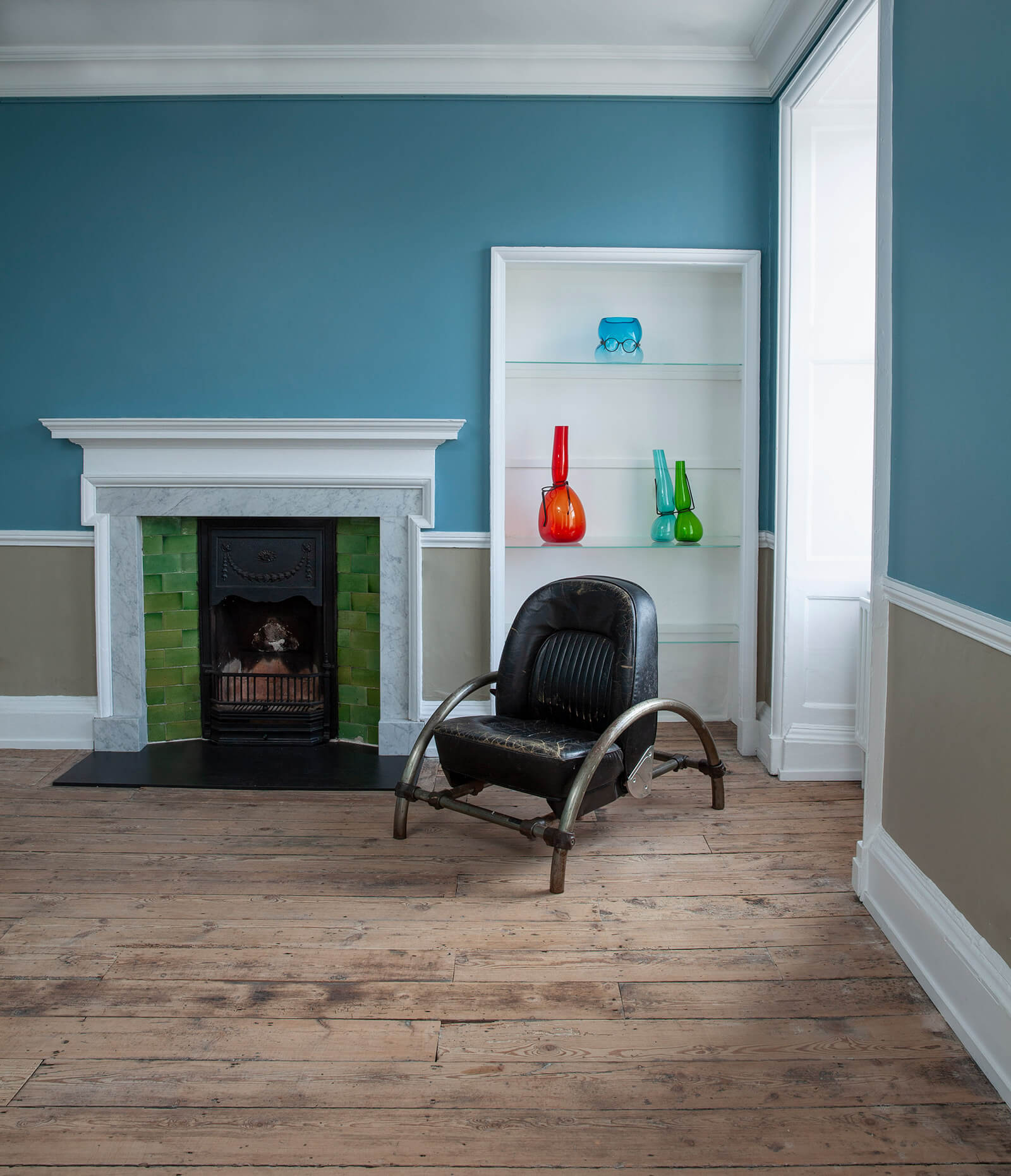
Installation view, with ‘Rover’ lounge chair, 1981 and ‘Where Are My Glasses’ series, 2018
COURTESY: Ron Arad & Newlands House Gallery / PHOTOGRAPH: Elizabeth Zeschin
“The Rover was inspired by Duchamps’s ready-mades and Picasso’s ‘Toro’ made of a bicycle seat and handlebars, but people thought it was political. They put it on the front cover of Friends of the Earth magazine and said it was about recycling. I didn’t correct them.” Misinterpretation can be useful, he thinks. It got him invited to participate in the 1987 Pompidou exhibition to celebrate its 10th anniversary, Nouvelle Tendances.
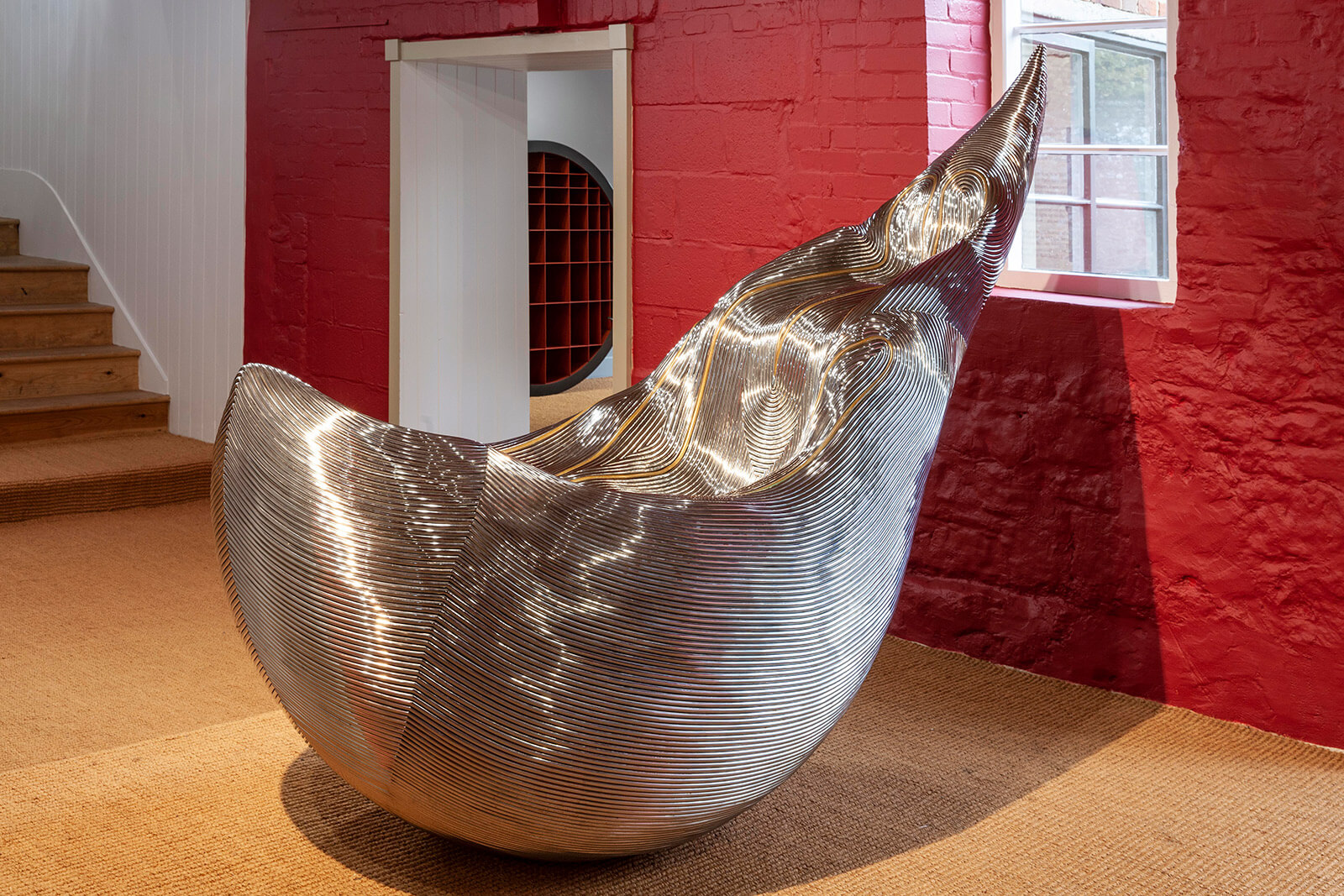
Ron Arad, ‘Rod Gomli’, 2009
COURTESY: Ron Arad & Newlands House Gallery / PHOTOGRAPH: Elizabeth Zeschin
“The French called me a ‘Ruinist’ because I used salvage and was from London. They thought I must be a punk. But I didn’t grow up on a council estate, I was a privileged, spoilt brat,” he grins. Arad was the youngest designer there and it got him noticed. He went solo in 1989 when he established Ron Arad Associates and was Head of Design Products Department at the RCA from 1997-2000. Unsurprisingly, the students he championed were the mavericks: “I only looked at the applicants who’d been rejected.” He puts on one of the masks he made during lockdown to raise money for the NHS, which layer the faces of Lady Gaga, Matisse, Groucho Marx and myriad others over one’s own. “I was inspired by the Morgan car cover. This is how you jump from one thing to another,” he says. “You don’t think, hang on I’m an architect, you just jump.”
Newlands House Gallery – is a new gallery dedicated to the great artists of the 20th century and contemporary art, photography and design.
